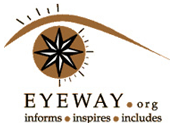For those who grew up in the age before cable television when programmes aired on Doordarshan were the stuff that Sunday afternoons were made of, news broadcast in sign language would always remain etched in their minds.
Fast forward two decades later, the communication intended for the benefit of the hearing impaired is hard to come by on our television channels. Yet another sign of a society that excludes the concept of ‘inclusion', activists would concur.
Lack of awareness
In an era when information is freely accessible to citizens, it is yet to reach the hands of the differently abled in a language that is comprehensible to them. This is a cause for concern as it is lack of awareness of rights and entitlements that keeps persons with disabilities on their backfoot, experts in the field point out.
“Disabled are disempowered because of lack of access to information,” puts Lobithas, executive secretary, Organisation for Development Action, succinctly. Article 21 of the United Nations Convention for Rights of Differently Abled, entitles differently abled with right to access and communicate information. Though the instrument is ratified by India, efforts have not been taken to implement the stipulations.
Be it public announcements, government schemes or health awareness programmes, communication in these cases is not designed to reach the visually challenged and hearing impaired. Information, education and communication (IEC) material prepared by various government departments, district administrations do not take into account constraints of differently abled. “It is important that health awareness programmes on HIV-AIDS and cancer campaigns reach all segments of people. Without such crucial information, differently abled are rendered vulnerable,” says Lobithas. Braille script, auditory signals and accessibility-friendly websites ensure inclusivity and should be adopted at least by health and welfare departments, he feels.
Information and news is generally accessed through television and news portals, none of which are disabled-friendly by including subtitled news, sign language, auditory port or accessibility features. “Radio becomes the principal source of information for them,” says Ravi, Junior Rehabilitation Officer. “Only the educated can afford to get information from the internet, thereby increasing the dependency of persons with disabilities.”
Websites by government departments should set an example by incorporating an audio port and voice-over facility to assist visually challenged and senior citizens, Mr. Lobithas suggests.
Only persons with personal computers and internet facility can afford installing assistive technology, says Prabhavathy, head, centre for differently abled, Bharathidasan University. The centre has installed open source and corporate software to help students access study material. Once the assistive technology lab is ready, persons with disabilities can acquaint themselves better with current and relevant information by accessing e-newspapers and web portals. The facility would be offered free of cost with a vernacular option. While audio format books can make reading easy for visually challenged, visuals and multimedia can assist hearing impaired, shares Ms.Prabhavathy. “Collaboration of various educational institutes in the district for imparting hands-on-training to identified students is necessary for successful implementation of the project.”

Facebook comments